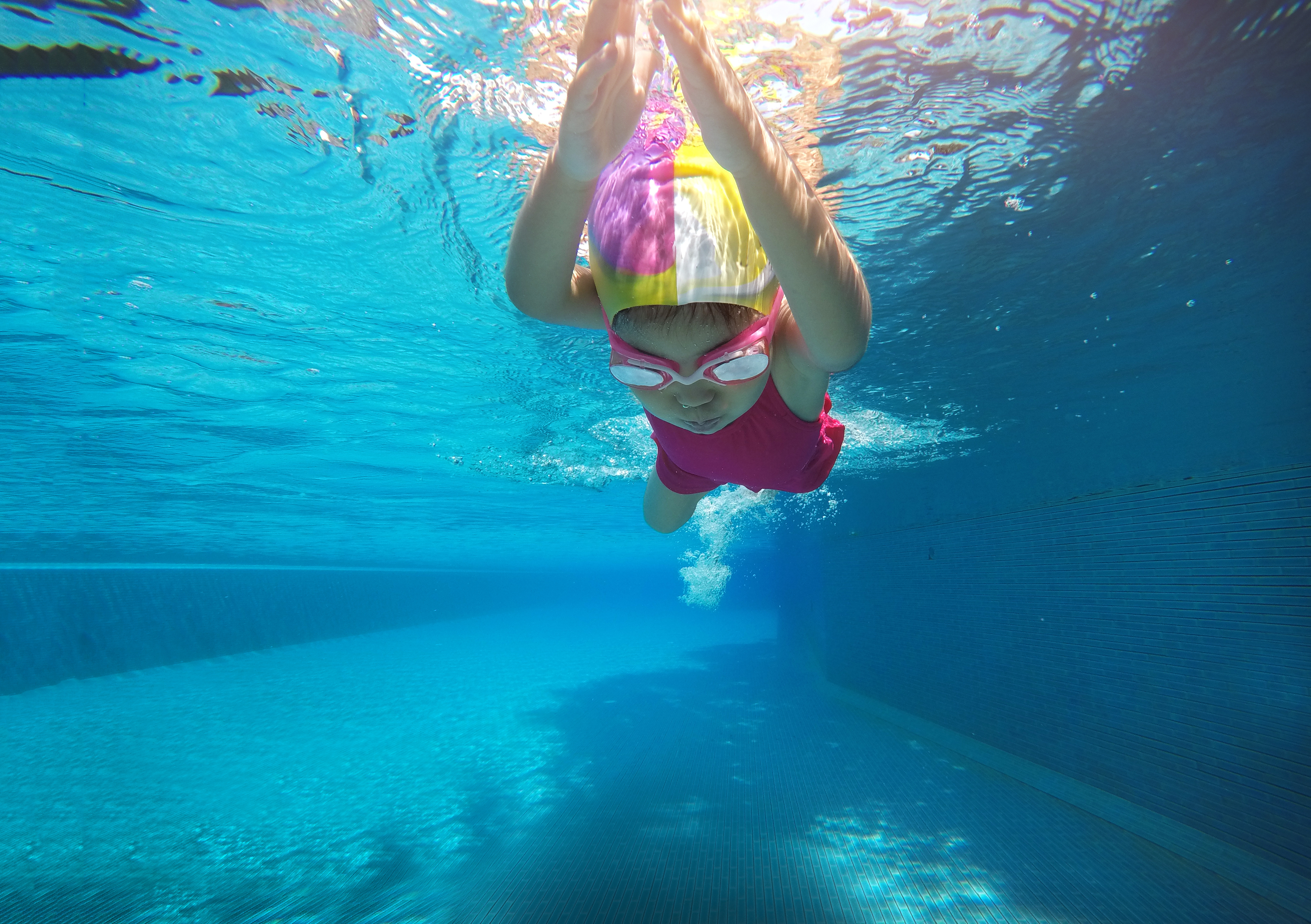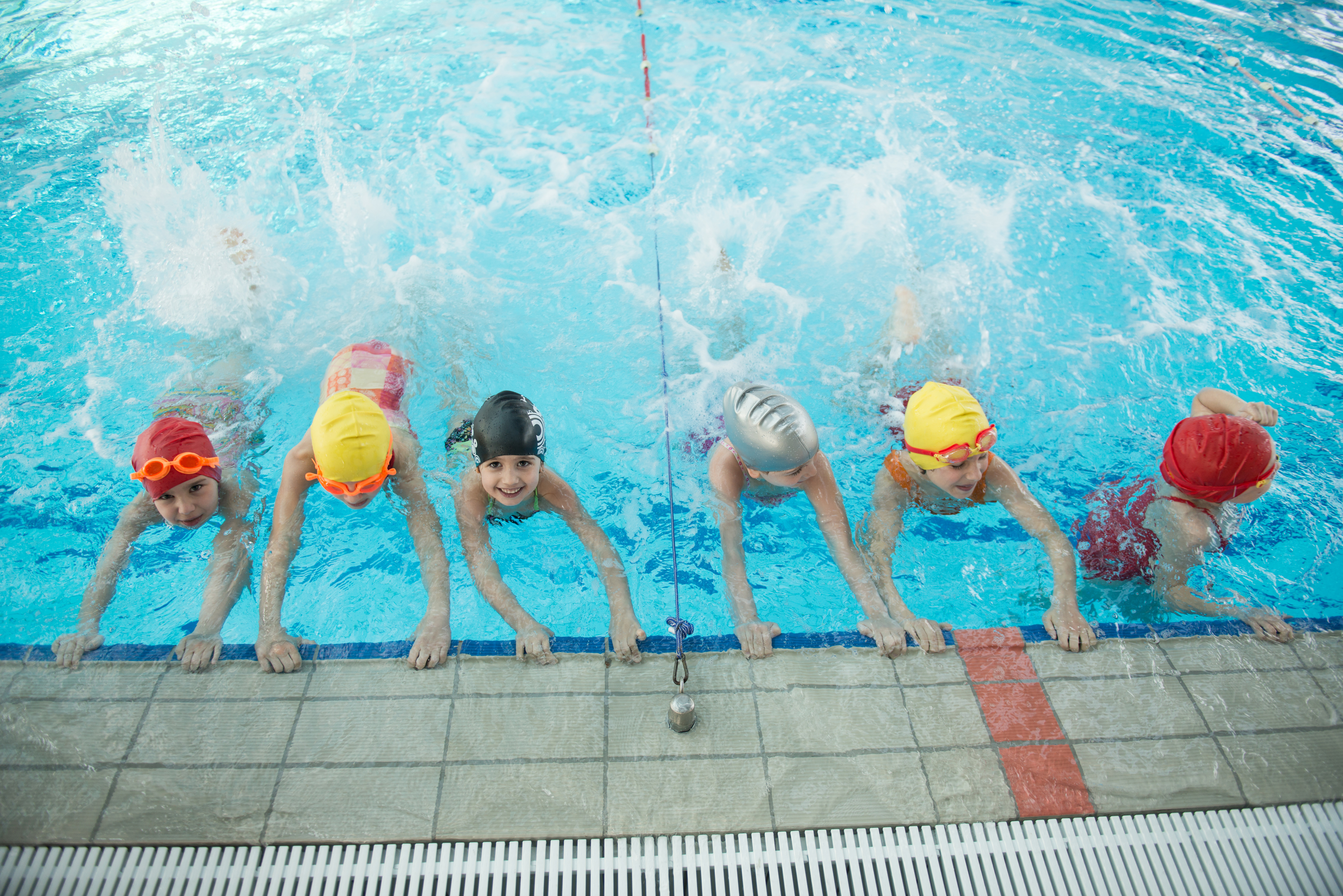
What’s the #1 Kid Survival Skill especially for summer (but really for all year long)? Why, swimming of course!
With summer solstice on its way (June 21st), I knew it was time for my three and a half year old to start to learn to swim. Around three years old is the recommended age to learn to swim. As I am all about children’s safety and security, I consider learning to swim a necessity. It’s the #1 Kid Survival skill for summer and beyond.
The #1 Kid Survival Skill for Summer & Beyond

First, some quick statistics from the Center for Disease Control (CDC):
In the US, growing is the leading cause of death for children ages 1-4.
For children ages 5-14, it is the second leading cause of unintentional injury death (after car accidents).
Every year there is an estimated 4,000 fatal drownings in the US.
And there are an additional 8,000 non fatal US drownings per year as well.
Factors that Make Drowning more Likely (from the CDC)
- Not being able to swim.
- Missing or ineffective fences around water.
- Lack of close supervision.
- Location (varies by age) but includes bathtubs, pools, lakes, oceans, rivers.
- Not wearing life jackets. For instance when boating.
- Drinking alcohol while around water.
- Using drugs and prescription medication.
Surprising Facts to Know about Child Drownings
It is 100 per cent preventable. You need to think of water completely differently. [It’s] sort of like sitting here and I am looking outside at my pool and that is a lion.
‘That is a lion, that is a kidnapper. That is something that could take my child in 30 seconds.
Morgan Beck (wife of bode miller) on the danger of pool water
Olympic gold medalist skier Bode Miller’s 19 month old baby girl drowned in a neighbor’s pool in 2018. Since that time, he and his wife Morgan Miller have been advocating for educating parents of this danger. You can read more about their heartbreaking story yet so important message for parents everywhere HERE.
Some surprising facts I learned from their story include:
- A child under 30 pounds can drown in 30 seconds. 30 seconds.
- Almost 70 percent of water drownings occur when children are not meant to be near water. For instance, the Miller’s child drowned when the rest of the family when inside the house. She wasn’t meant to be by the pool.
- Apparently using water “wings” or “puddle pushers” can give a child a false sense of being able to float.
- It’s possible for young babies to drown in puddles of water or an open toilet.
- Drowning doesn’t happen loudly-It’s not calling for help or splashing around. It happens fast and it only takes a second.
Be Aware of Having a “False Sense of Security”
Do NOT have a false sense of security if you’ve given your child swim lessons. Or if there are barriers around your pool. Always be vigilant about water safety regardless of how “safe” you are. Remember that drownings happen when you aren’t watching. The water is NOT just fun and games. It’s important that you and your kids are aware!
Types of Swim Classes For Younger Children

There are “parent and me” type water classes for infants. However, the experts agree that these kinds of classes are good to introduce water to the baby. Though I know a couple of moms who tried these early water classes with their young infants. And while I’m sure they’ve helped some children, a couple of moms have said it made their babies more scared of water.
At the same time there are also water survival classes for younger children. Generally, the recommended ages for these types of classes are 6 months and up. For the most part, these classes are meant to teach young children the ability to roll on their back and float. Secondly, they are also designed to acclimate the young child to the water. Also, they educate parents on water safety.
My #1 Kid is Learning the #1 Survival Skill this Summer!

What a difference a year makes! Although last year my two and a half year old baby clung to me like a monkey while I stood in the middle of my parents’ pool. This year, she is happily participating in her own independent swim class for 3-5 year olds. She started in the Level 1 (Water Acclimation and Introduction) at the local YMCA. And she’s not only comfortable in water now…
What My Childs First Swim Class has Taught Her

- Blow bubbles in water
- Float on her back
- Kick her legs in water
- Scoop her arms in water
- Hold on to the edge of the pool
- Sit in water independently
- Be guided through the water by the teacher
- Jump into the pool!
I am so proud of her!
Now I can work with her myself in her grandparents’ pool. Finally without the monkey cling!
Remember 2 Savor these moments! We are all blessed to be sharing these moments.
